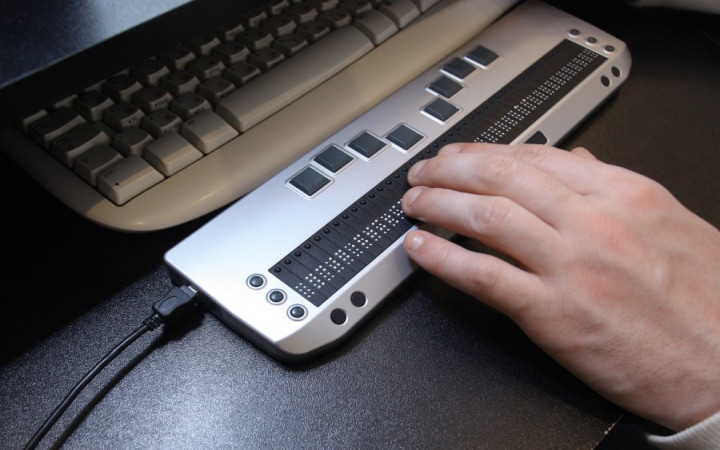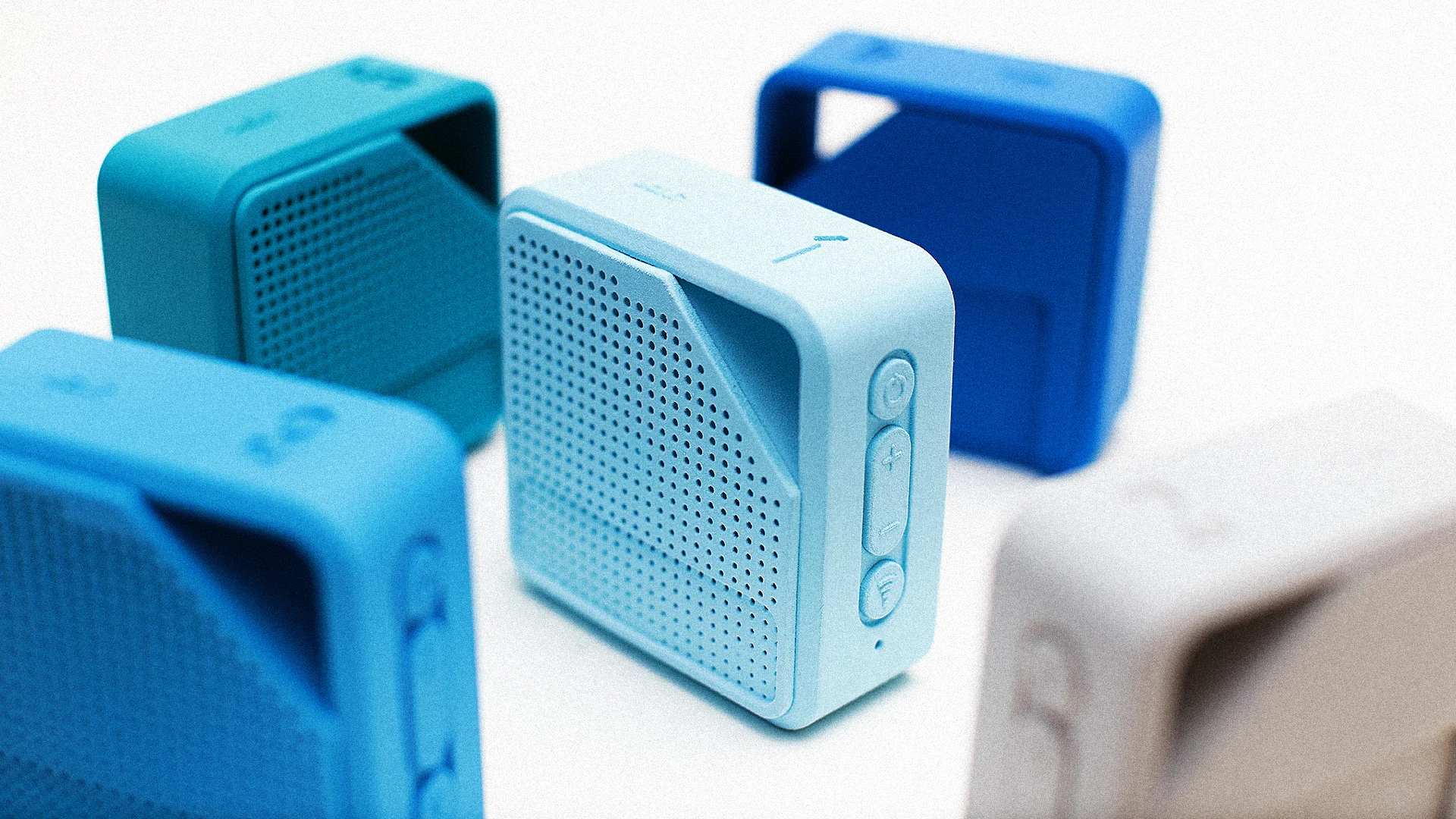Enhancing Lives With Advanced Assistive Gadgets for the Blind
The integration of advanced assistive devices for the blind is changing just how people experience their environments and engage with their communities. Technologies such as increased truth clever glasses and innovative electronic traveling help not just promote navigating yet additionally boost total lifestyle. These innovations foster a sense of freedom and self-efficacy amongst users, allowing them to carry out day-to-day tasks with newly found self-confidence. However, the ramifications of these advancements extend past plain performance; they challenge social perceptions of handicap and independence. What does this advancement indicate for the future of assistive modern technology and its role in equipping people?
Introduction of Assistive Tools
Assistive gadgets for the blind encompass a varied series of devices and technologies created to improve freedom and boost the lifestyle for individuals with aesthetic impairments. These gadgets satisfy various requirements, from navigation and wheelchair to interaction and everyday task management.
One of the main categories of assistive gadgets consists of wheelchair help, such as white walking canes and guide canines, which help individuals browse their environments securely. Electronic travel aids, outfitted with sensors and audio comments, additionally play a considerable function in mobility improvement.
Additionally, devices that assist with everyday living activities, such as adaptive kitchen devices, Braille labels, and chatting watches, encourage people to carry out tasks separately. Interaction aids, consisting of display readers and Braille displays, facilitate accessibility to information and make it possible for individuals to involve successfully with the electronic world.
In addition, low-tech remedies like multiplying glasses and large-print materials continue to be important for lots of users. Jointly, these assistive tools offer not just as useful tools however also as important enablers of freedom, promoting higher involvement in a world that commonly prioritizes sighted experiences. Their assimilation into life is important for promoting inclusivity and enhancing overall wellness for those with aesthetic disabilities.
Ingenious Technologies being used
Development in technology has significantly changed the landscape of tools offered for people with aesthetic problems. Among the most significant developments are wise glasses incorporated with augmented reality, which give real-time navigating aid and object recognition. These gadgets take advantage of advanced electronic cameras and expert system to deliver auditory hints, boosting the user's spatial recognition and freedom.
In addition, mobile applications have become powerful resources, making it possible for users to determine currency, read message aloud, and navigate strange settings via verbal directions. Tools such as Braille display screens and refreshable Braille tools proceed to evolve, using smooth connection with mobile phones and computer systems, consequently enhancing interaction and accessibility to details.
Wearable modern technology, consisting of smartwatches furnished with voice-activated functions, further empowers customers by facilitating fast access to notifications and alerts without needing visual involvement. Tactile maps and 3D printing are additionally gaining traction, supplying substantial representations of spaces that help in orientation and movement training.
Collectively, these innovative technologies not just enhance the lives of aesthetically impaired individuals yet additionally foster higher independence, inclusivity, and engagement with the broader neighborhood, consequently improving assumptions of accessibility. (OCR devices for the blind)
Individual Stories of Empowerment
Empowerment usually emerges from individual experiences that highlight the transformative effect of technology on people with visual disabilities. Take, for example, the story of Sarah, a young artist who restored her interest for painting through using a wise walking stick geared up with obstacle detection. This device not only promoted her movement but instilled a newly found self-confidence, enabling her to browse public rooms independently and seek her creative ventures.

These narratives emphasize the profound pop over to this web-site results that progressed assistive tools can have on every day life. By enabling people to get rid of obstacles, innovation cultivates a feeling of freedom and self-respect. Such empowerment stories serve as a testament to the capacity of innovation, showing just how the right devices can significantly enhance lifestyle and open doors to new possibilities for those with aesthetic disabilities.
Benefits of Advanced Solutions
Just how can advanced services essentially improve web the lives of individuals with visual impairments? The combination of sophisticated technology right into assistive gadgets substantially transforms day-to-day experiences for those impacted by vision loss. These sophisticated solutions use unmatched autonomy, allowing customers to browse their environments with self-confidence. Tools such as clever canes furnished with sensors, navigation applications, and wearable technology are created to provide real-time comments, enhancing spatial understanding and minimizing the dangers related to mobility.
Moreover, advanced assistive technologies cultivate social incorporation by assisting in interaction and communication. Voice-activated devices and applications enable individuals to accessibility details and involve with their environments individually, breaking barriers that previously hindered their participation in academic, expert, and social settings.
On top of that, the modification and adaptability of these options satisfy the diverse demands of individuals, thus boosting their total lifestyle. Improved performance, such as things recognition and text-to-speech capabilities, encourages individuals with visual impairments to do tasks that they might have when located testing. Inevitably, progressed assistive technologies not just improve self-reliance and safety however additionally advertise self-respect and self-regard, allowing users to lead satisfying lives.
Future Fads in Assistive Technology
As technology remains to evolve, the landscape of assistive devices for the blind is poised for remarkable improvements that will additionally enhance ease of access and freedom. Arising trends in assistive innovation indicate a shift toward increased combination of artificial intelligence (AI) and device knowing, enabling devices to adapt to private customer requires in real-time. These technologies are anticipated to facilitate even more intuitive navigation systems that can determine obstacles and supply audio responses, considerably boosting outside movement.
Furthermore, the development of wearable technology, such as clever glasses furnished with augmented reality, will certainly allow users to obtain contextual details about their surroundings, therefore enriching their spatial understanding. Moreover, improvements in haptic innovation assurance to develop tactile comments gadgets, permitting users to regard information via touch, improving discovering and interaction with their atmosphere.
Telecommunication advancements are also leading the means for remote help services, where trained experts can give advice via video phone calls, ensuring assistance is easily available. As these patterns unfold, the future of assistive devices for the blind will unquestionably promote higher freedom, encouraging individuals to navigate their world with confidence and convenience.

Final Thought
The integration of innovative assistive devices for the blind stands for a substantial innovation in fostering freedom and improving lifestyle. By making use of ingenious innovations, these tools encourage users to navigate their settings with greater self-confidence and freedom. As the field remains to evolve, continuous r & d will likely yield much more innovative options, additionally transforming the local optometrist lived experiences of individuals with visual impairments and promoting a greater sense of addition within society.
The combination of advanced assistive devices for the blind is transforming how individuals experience their surroundings and engage with their areas. The combination of innovative technology into assistive devices considerably changes everyday experiences for those affected by vision loss.As modern technology proceeds to advance, the landscape of assistive devices for the blind is positioned for exceptional developments that will certainly additionally improve accessibility and freedom. Arising trends in assistive technology suggest a shift toward boosted assimilation of synthetic intelligence (AI) and machine understanding, allowing gadgets to adapt to private user needs in real-time.The assimilation of sophisticated assistive gadgets for the blind stands for a substantial innovation in fostering self-reliance and improving high quality of life.